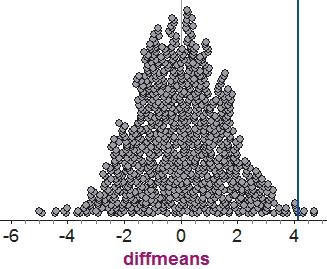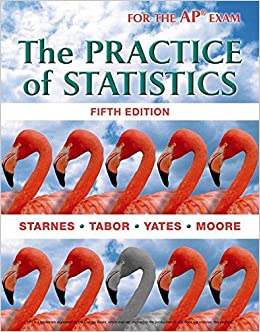Rewards and creativity Dr. Teresa Amabile conducted a study involving 47 college students who were randomly assigned
Question:
Rewards and creativity Dr. Teresa Amabile conducted a study involving 47 college students who were randomly assigned to two treatment groups.
The 23 students in one group were given a list of statements about external reasons (E) for writing, such as public recognition, making money, or pleasing their parents. The 24 students in the other group were given a list of statements about internal reasons (I) for writing, such as expressing yourself and enjoying playing with words. Both groups were then instructed to write a poem about laughter. Each student’s poem was rated separately by 12 different poets using a creativity scale.37 The 12 poets’ ratings of each student’s poem were averaged to obtain an overall creativity score.
We used Fathom software to randomly reassign the 47 subjects to the two groups 1000 times, assuming the treatment received doesn’t affect each individual’s average creativity rating. The dotplot shows the approximate randomization distribution of x–I − x–E.

(a) Why did researchers randomly assign the subjects to the two treatment groups?
(b) In the actual experiment, x–I − x–E = 4.15. This value is marked with a blue line in the figure. What conclusion would you draw? Justify your answer with appropriate evidence.
(c) Based on your conclusion in part (b), could you have made a Type I error or a Type II error? Justify your answer.
Step by Step Answer:






